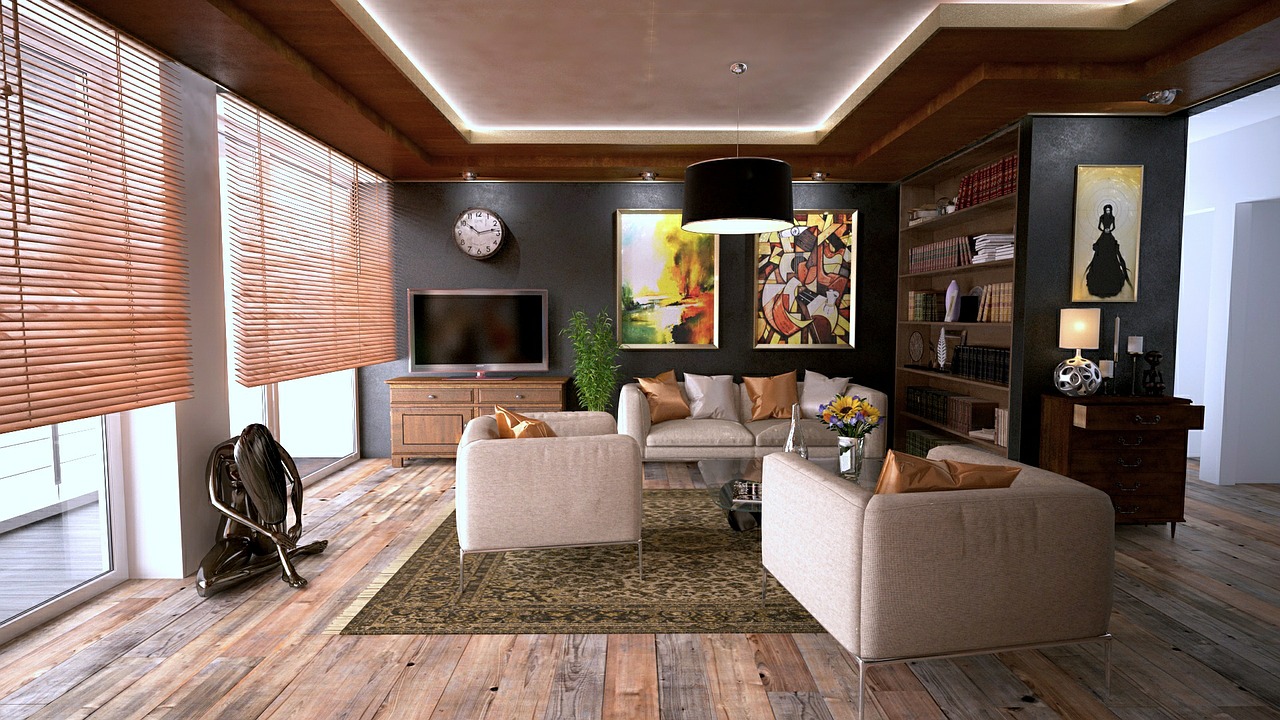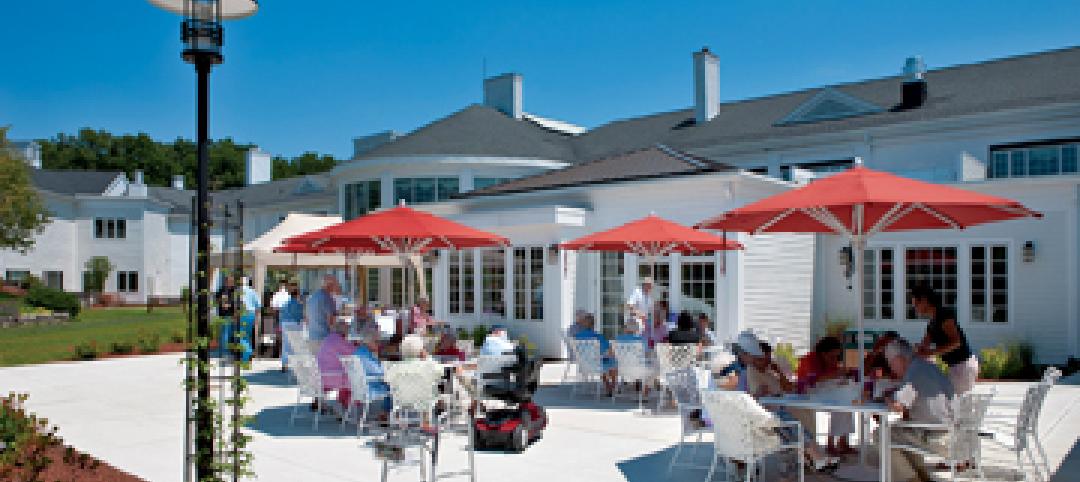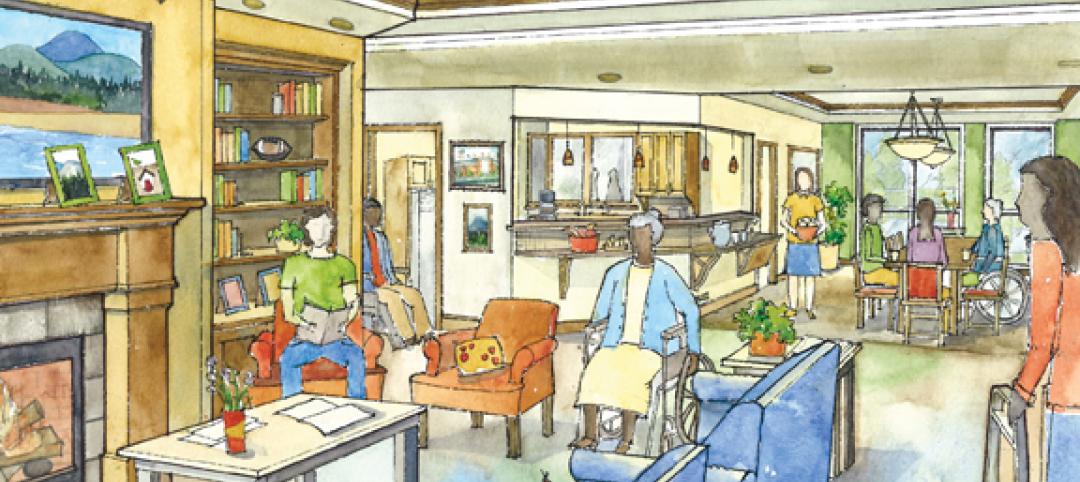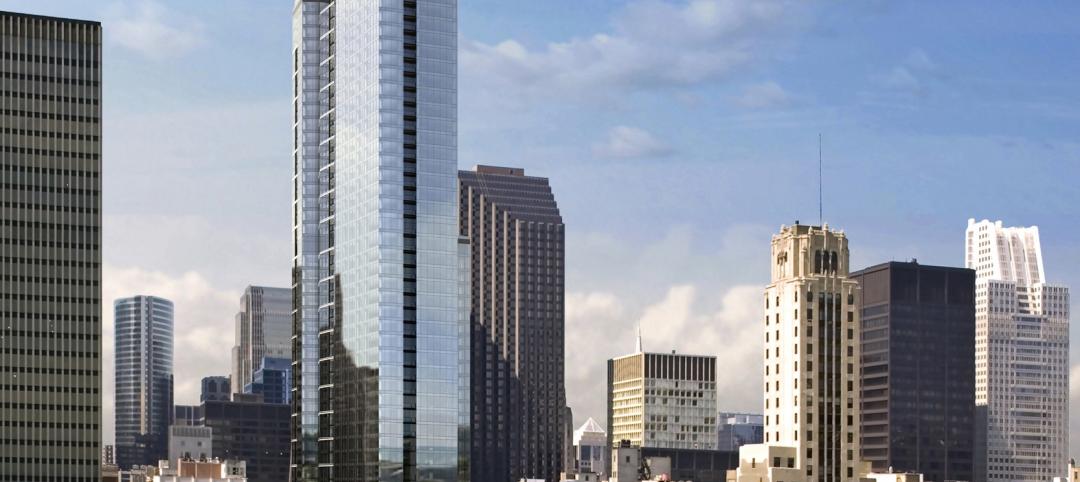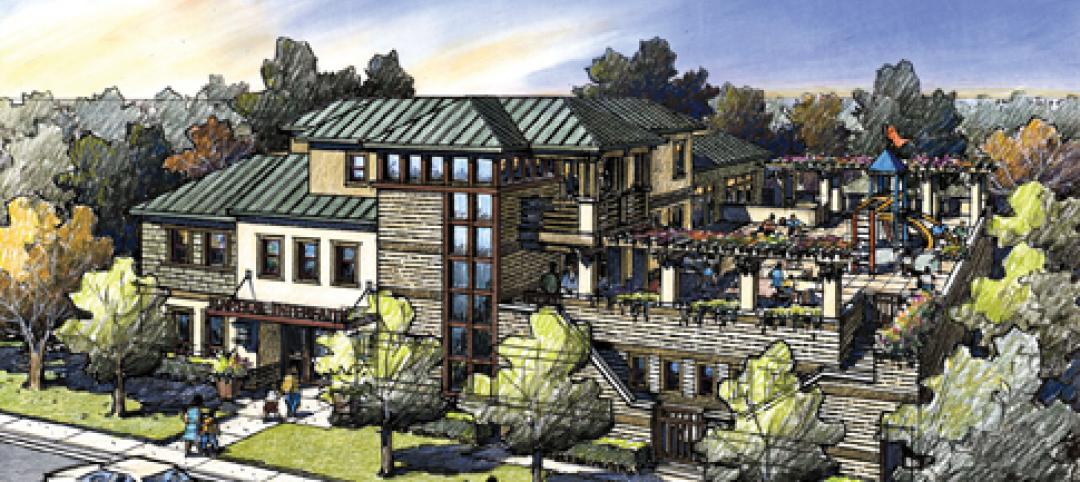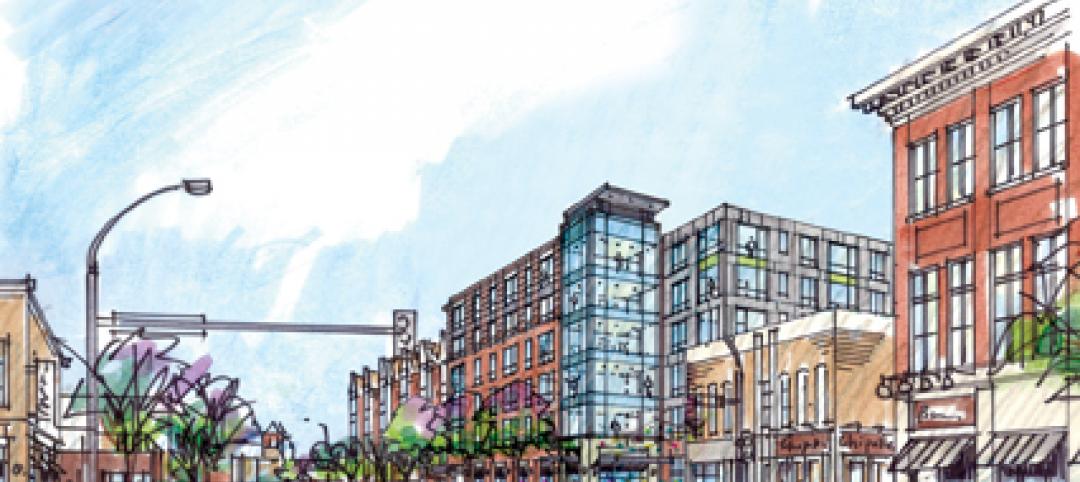The average new apartment in the U.S. is about 8% smaller than the average was a decade ago. And that shrinkage wasn’t confined to urban markets, either.
Those are two of the main findings in a recent survey of the apartment market, conducted by RENTCafé, a nationwide apartment search website, using data provided by Yardi Matrix, a sister company that researches and reports on multifamily properties of 50 units or more across 121 markets in the U.S.
That research shows the size of new apartments averaging 934 sf, versus 1,015 sf in 2006. New studio apartments took the steepest decline, to an average 504 sf this year from 614 sf a decade ago, representing a nearly 18% difference. New two-bedroom apartments, on the other hand, at 1,126 sf, are actually 1% larger than the average for that apartment type in 2006.
RENTCafé estimates that the average apartment size in the U.S., regardless of when it was built, is 889 sf. There are three regions of the country that exceed the average—the Southeast (974 sf), South (937), and Mid-Atlantic (891).
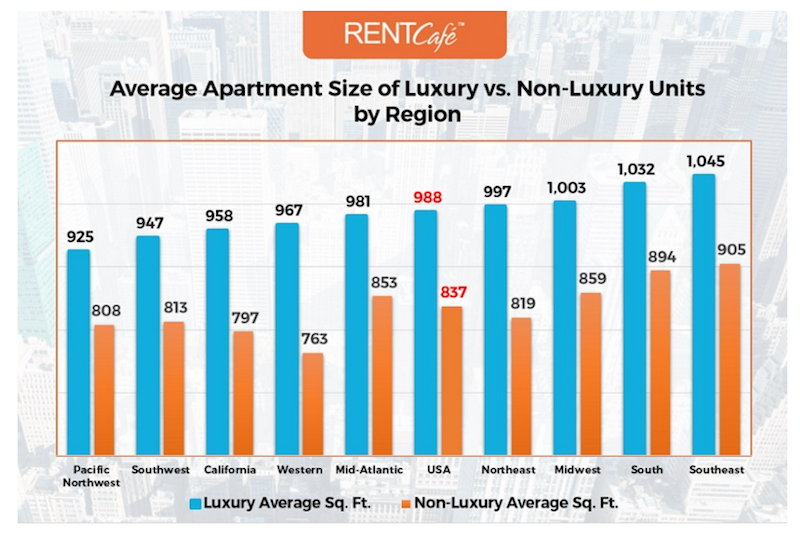
The southern regions of the U.S. still give renters the most for their buck, in terms of average apartment size. Image: RENTCafe
The largest gap between luxury and non-luxury apartment sizes is in the western states, 967 sf vs. 763 sf. Conversely, the gap between luxury and non-luxury apartments in the Southeast is relatively narrow: 1,045 sf vs. 905 sf.
Atlanta leads all cities with the largest average apartments, followed by Plano, Texas; Jersey City, N.J.; Henderson, Nev.; and Chesapeake, Va. Arizona has three of the five cities—Tucson, Glendale, Mesa—with the smallest average apartment sizes. (El Paso, Texas, and Buffalo, N.Y., fill out that ranking).
By far, Atlanta leads all cities with the largest average two-bedroom apartments, at 1,125 sf; Jersey City is its closest rival in that category, at 1,097 sf.
Interestingly, neither New York, San Francisco, nor Boston—three cities where the micro apartment crae hit first—ranks among the top 20 cities for smallest apartment size. (In fact, Boston is No. 10 in among the cities with the largest average apartments.)
“But that doesn’t erase the fact that Manhattan remains the nation’s tightest market, with average rents reaching a whopping $4,043 per month, more than three times the national average,” Yardi Matrix data show.
RENTCafé’s survey breaks down 95 metros and their average apartment sizes by studio, one-bedroom, and two-bedroom. In Los Angeles, the country’s largest city, a studio apartment averages 524 sf, a one-bedroom 729 sf, and a two-bedroom 1,043 sf. Reno, Nev., has the smaller average studios (352 sf), Stockton, Calif., the smaller average one-bedroom (632 sf), and Buffalo the smallest average two-bedroom (843 sf).
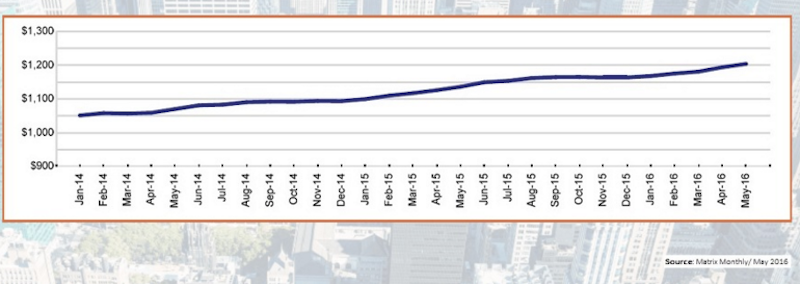
Despite the shrinkage in apartments, rents aren't retreating. Image: RENTCafe
The survey cautions, however, that while apartments are shrinking, their rents may not be. “Apartment rents are breaking record after record,” with the national monthly rent hitting an average of $1,204 in May, the report states. In San Francisco, “you’ll still be paying $2,500 for a 500-sf studio.”
There is increasing demand for high-density housing with mixed-use components, which are being directed specifically at Millennials and downsizing Baby Boomers.
Another thing that hasn’t changed: Renters desire apartment buildings with lots of amenities. RENT Café points to Eastown, the largest apartment community delivered to L.A.’s rental market last year. Located in Hollywood, the community includes a pool and spa with lounges, a fireplace and patio area, a gym and fitness center, and electric vehicle charging stations. Rents start at $1,925 for a 571-sf apartment.
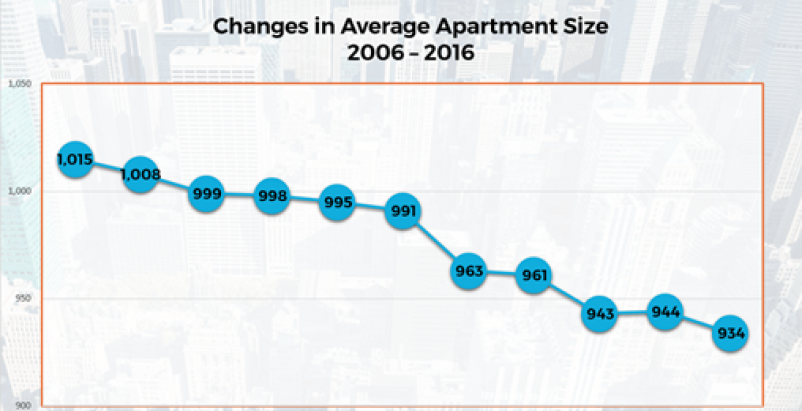 The average size of a new apartment in the U.S. has been on a steady decline for the past 10 years, according to a new survey that tracks apartment sizes in most major metros across the country. Image, which shows average square footage by year: RENTCafe
The average size of a new apartment in the U.S. has been on a steady decline for the past 10 years, according to a new survey that tracks apartment sizes in most major metros across the country. Image, which shows average square footage by year: RENTCafe
Related Stories
| Mar 22, 2011
Mayor Bloomberg unveils plans for New York City’s largest new affordable housing complex since the ’70s
Plans for Hunter’s Point South, the largest new affordable housing complex to be built in New York City since the 1970s, include new residences for 5,000 families, with more than 900 in this first phase. A development team consisting of Phipps Houses, Related Companies, and Monadnock Construction has been selected to build the residential portion of the first phase of the Queens waterfront complex, which includes two mixed-use buildings comprising more than 900 housing units and roughly 20,000 square feet of new retail space.
| Mar 17, 2011
Perkins Eastman launches The Green House prototype design package
Design and architecture firm Perkins Eastman is pleased to join The Green House project and NCB Capital Impact in announcing the launch of The Green House Prototype Design Package. The Prototype will help providers develop small home senior living communities with greater efficiency and cost savings—all to the standards of care developed by The Green House project.
| Mar 11, 2011
Renovation energizes retirement community in Massachusetts
The 12-year-old Edgewood Retirement Community in Andover, Mass., underwent a major 40,000-sf expansion and renovation that added 60 patient care beds in the long-term care unit, a new 17,000-sf, 40-bed cognitive impairment unit, and an 80-seat informal dining bistro.
| Mar 11, 2011
Mixed-income retirement community in Maryland based on holistic care
The Green House Residences at Stadium Place in Waverly, Md., is a five-story, 40,600-sf, mixed-income retirement community based on a holistic continuum of care concept developed by Dr. Bill Thomas. Each of the four residential floors houses a self-contained home for 12 residents that includes 12 bedrooms/baths organized around a common living/social area called the “hearth,” which includes a kitchen, living room with fireplace, and dining area.
| Mar 11, 2011
Texas A&M mixed-use community will focus on green living
HOK, Realty Appreciation, and Texas A&M University are working on the Urban Living Laboratory, a 1.2-million-sf mixed-use project owned by the university. The five-phase, live-work-play project will include offices, retail, multifamily apartments, and two hotels.
| Mar 1, 2011
How to make rentals more attractive as the American dream evolves, adapts
Roger K. Lewis, architect and professor emeritus of architecture at the University of Maryland, writes in the Washington Post about the rising market demand for rental housing and how Building Teams can make these properties a desirable choice for consumer, not just an economically prudent and necessary one.
| Feb 15, 2011
New Orleans' rebuilt public housing architecture gets mixed reviews
The architecture of New Orleans’ new public housing is awash with optimism about how urban-design will improve residents' lives—but the changes are based on the idealism of an earlier era that’s being erased and revised.
| Feb 11, 2011
Chicago high-rise mixes condos with classrooms for Art Institute students
The Legacy at Millennium Park is a 72-story, mixed-use complex that rises high above Chicago’s Michigan Avenue. The glass tower, designed by Solomon Cordwell Buenz, is mostly residential, but also includes 41,000 sf of classroom space for the School of the Art Institute of Chicago and another 7,400 sf of retail space. The building’s 355 one-, two-, three-, and four-bedroom condominiums range from 875 sf to 9,300 sf, and there are seven levels of parking. Sky patios on the 15th, 42nd, and 60th floors give owners outdoor access and views of Lake Michigan.
| Feb 11, 2011
Sustainable community center to serve Angelinos in need
Harbor Interfaith Services, a nonprofit serving the homeless and working poor in the Harbor Area and South Bay communities of Los Angeles, engaged Withee Malcolm Architects to design a new 15,000-sf family resource center. The architects, who are working pro bono for the initial phase, created a family-centered design that consolidates all programs into a single building. The new three-story space will house a resource center, food pantry, nursery and pre-school, and administrative offices, plus indoor and outdoor play spaces and underground parking. The building’s scale and setbacks will help it blend with its residential neighbors, while its low-flow fixtures, low-VOC and recycled materials, and energy-efficient mechanical equipment and appliances will help it earn LEED certification.
| Feb 11, 2011
Apartment complex caters to University of Minnesota students
Twin Cities firm Elness Swenson Graham Architects designed the new Stadium Village Flats, in the University of Minnesota’s East Bank Campus, with students in mind. The $30 million, six-story residential/retail complex will include 120 furnished apartments with fitness rooms and lounges on each floor. More than 5,000 sf of first-floor retail space and two levels of below-ground parking will complete the complex. Opus AE Group Inc., based in Minneapolis, will provide structural engineering services.


